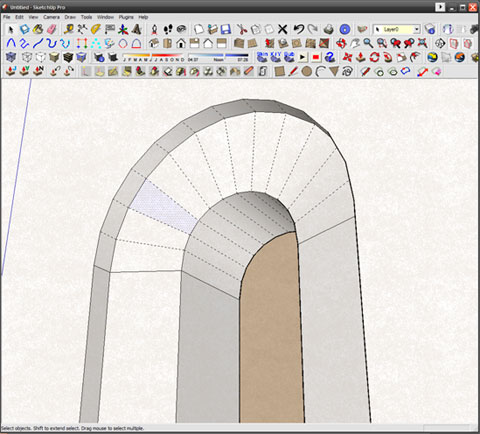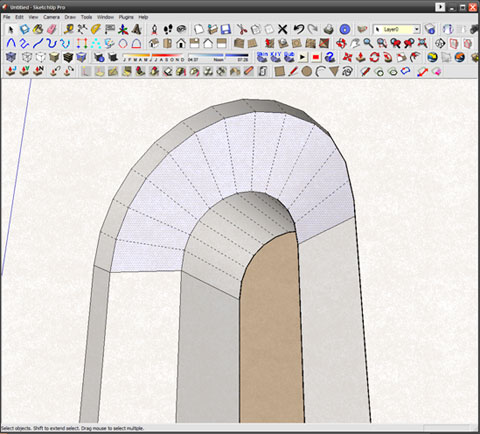A ruby request: select similar
-
Select similar faces or edges: this is a function of Wings 3D that I find great. It allows you to select all identical or quite identical faces of a model and it is very useful with complex, non planar geometries.
In Sketchup, when you can not select all the faces that you need with a single operation you have to select them manually by multiple ctrl/shift clicks.For those who doesn't know it, Wings 3d is a free (even for commercial purposes) subdivision modeler that allows you to model nice organic shapes - http://www.wings3d.com/ - I use it combined with the astonishing Soap Skin & Bubble ruby of Josef Leibinger.
Since the release of Subdivide and Smooth ruby by Dale Martens I thought I can integrate in Sketchup most of the modeling process made with Wings 3D.
It would be great to port to Sketchup some of the selection options of Wings 3D too.
By selecting similiar faces, it lets me select all faces with the some shape and area (not really the some, but with a tolerance that tends to zero. That's why it's named select similar, instead of select identical - in rare cases with some complex models it selects unexpected faces, but I think this is the fee to pay for a fast operation). The selection cares about the bounding geometry too.
I hope that someone of you ruby gurus can figure out how it works and expand again SU features.
Here a couple of screenshots to explain better what I mean:


-
This is possible, and it's typically a script that would be progressively enriched by the experience of users, because similarity is something actually quite subjective (unless you have the full specs of what Wings3D does).
Let's get more feedback from other members of the forum.
-
took a quick look on wings3d sourcode (in erlang) and seems that similar command does a tolerance on face area, which can be done easily in SU via
face.area.between?(selected_face.area - tolerance, selected_face.area + tolerance)we can add a check if it has the same normal as an optional
-
Similar faces could also be weighted more if they are connected, and still more if their edges have similar lengths / ratios.
-
Richard was also looking for a script that could use this function for identifying leaves on an imported model:
Advertisement







